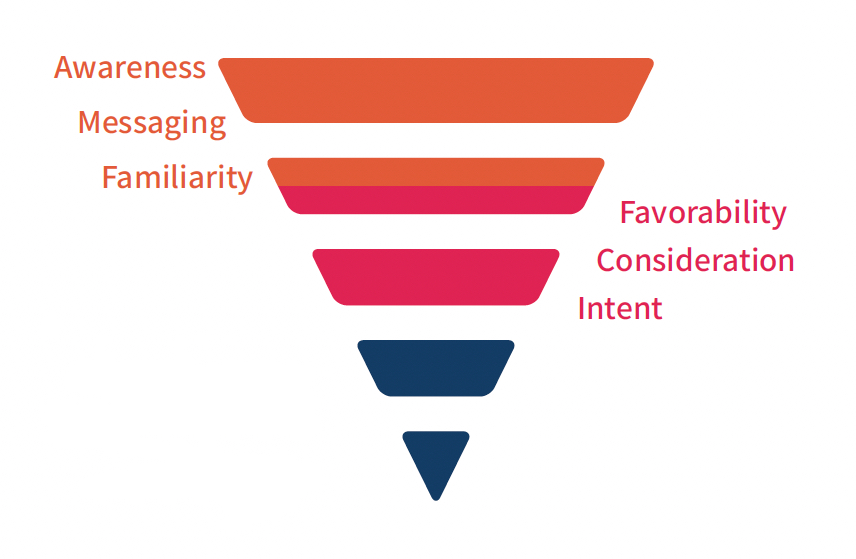Let me ask you a question: What comes right before action?
Here’s my answer: Intent.
When we’re evaluating the effectiveness of a podcasting or streaming audio advertising campaign, a lot of attention gets paid to attributable actions. Did an ad drive someone to visit a website, download something, install an app or finally make a purchase? These are important questions, but not the only ones.
Consider your own behavior. How often do you hear an ad for a product and immediately purchase it? If you’re anything like me, this hardly ever happens. Sometimes, if the ad piques my interest, then I’ll look for more information, maybe visit the website shared in the ad – if I can remember it – or pop the name into Google.
Still, is that what I do every time I hear about an interesting product? No, it’s not.
Intent Is a Critical Step in the Marketing Funnel
The thing with audio ads is that they’re not as clickable as screen-based digital media. Think of when you’re listening to a podcast while you’re cooking, or listening to radio on your morning commute. Most people are not looking at the screen when listening. Even in environments like music streaming where there is a clickable companion banner, it’s not front and center because it’s typically a background listening experience – we’d have to make extra effort to take that action.
This means that when I hear about an interesting product in an ad, I’m most likely going to file it in my memory bank. At other times I take a note, either on my device or on plain old pen and paper.
When I do this, I’m actually moving through the marketing funnel. I’ve entered the very top, becoming aware of the product, and now moving towards the mid-funnel, where I’m actively considering it. By taking that note, I’m also signaling my intent to take action.

What action is that?
At the very least I’m signaling my intent to look for more information. Though I didn’t immediately check out the website, I’m intending to do so later. Depending on how persuasive the ad was, I might be moving farther along, even planning my purchase.
Of course, that’s great for the brand. But how do we measure that?
Attribution methods don’t pick this up because there was no attributable action, like a click, web landing or purchase.
Brand Lift Measures Intent
This is where brand lift studies come in. We can measure intent with this method because it’s all about gauging an ad campaign’s influence on consumers’ perception. We survey consumers exposed to the ad campaign, and explicitly ask them if they intend to look for more information about a product or purchase it. Then we compare results to surveys of people who didn’t hear the ad. If those who heard the ad have higher intent, then we have a reliable indicator that the campaign is working.
Of course, a brand hopes intent leads to action. But we know that doesn’t always happen. How many times have you thought about checking out a product, only to lose interest or forget about it? Sometimes, all it takes is hearing another ad to reignite interest. Brand lift can tell you when and how to keep a campaign alive, by showing that it’s building intent even if it’s not quite yet generating action.
Brand lift also helps uncover why the ads did or did not lead to action. This gets progressively more useful as the marketing funnel gets longer, especially with higher priced products or services that require more significant commitments. If an action doesn’t come until months later, then understanding intent is critical for filling out the picture for return on investment.
Again, this is something you really can’t get at with attribution alone, because it doesn’t measure anything before action is taken. This isn’t a case of brand lift vs. attribution. Rather, it’s about using the right tool for the job. Ideally, you can employ brand lift and attribution together in order to get a full-funnel view, optimizing targeting and messaging for intent to drive even more sales.
Learn more about how brand lift works and what you can measure.




